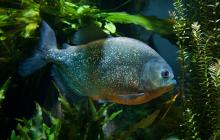Seed at the right time
It’s best to reseed any dead spots quickly before weeds can get established in the bare soil.
However, May and the period from mid-August to mid-September are generally the best times to sow seed. For good results, you need to be able to count on 6 to 8 weeks of relatively warm (15 to 25°C) and humid weather after seeding.
Analyze the site and your needs
Before seeding, take a careful look at the conditions of your site and ask yourself how you intend to use it: is it in the sun, in partial shade or in full shade? Will it be used as a playground or recreation area? These considerations will help you determine the right seed mixture to use.
If the site gets less than four hours of sunshine a day, even mixes designed for shade won’t be suitable. Opt instead for plants that are better adapted (ground covers, shade plants, etc.). In heavy traffic areas, consider another type of cover (mulch, natural stone or cobblestone).
Select the right seed mixture
There are several types of seed mixtures on the market: sun, semi-shade, shade, fast-germinating, low maintenance, and so on.
The mixtures called low maintenance are a very interesting choice. They contain different turf grasses selected for their greater tolerance to drought, pests and diseases, as well as for needing not as much upkeep (less watering, fertilizing and mowing).
These mixtures also often contain white dwarf clover. If they don’t include it, it’s a very good idea to add some when sowing.
Why sow clover on a lawn?
Planting white dwarf clover (Trifolium repens) in a lawn is extremely beneficial. Here’s why:
- this legume enriches the soil thanks to its association with nitrogen-fixing bacteria. The lawn therefore requires less fertilizer;
- clover resists water shortage better than the majority of grass seeds, and it generally stays green all summer long, even in dry periods;
- it’s seldom attacked by insect pests, which prefer lawn grass;
- its flowers attract pollinators.
Low-maintenance mixtures normally contain endophytes. These fungi live in symbiosis with certain turf grasses (such as rye grass and some fescues). Endophytes contribute among other things to increasing grass resistance to some pests – to the chinch bug, for example.
Buy quality seeds
When purchasing your seeds, check the label for the composition of the mixture. This should contain different grass seeds, not exclusively (Kentucky) bluegrass (Poa pratensis). Some companies also indicate the percentage of seed germination (which must be at least 75%).
Choose “Canada No. 1” category seeds to prevent weed spread. Don’t hold on to your seeds from one year to the next, since they may lose some of their germinating power.
Steps to follow for successful sowing
Advice: before seeding, check with your municipality to see if you need a watering permit.
- Dig up weeds.
- Top-dress with compost.
- Seed with a conventional seeder or by hand as evenly as possible, applying half the seeds in one direction, then the second half perpendicularly to the first pass. Follow the manufacturer’s recommended seed rate.
- Bury the seeds slightly in the ground with a rake to encourage their germination and protect them from the appetite of birds.
- Gently firm the soil with a roller half-filled with water to ensure that the seeds adhere to the soil (optional).
- Water with a fine spray so as not to uncover the seeds. Water frequently but in small amounts. Keep the soil moist for the first 2 to 3 weeks. Gradually increase the amount of water and reduce the frequency of watering as the roots grow. Avoid walking on the new grass.
- Mow the lawn for the first time once the grass is 10 cm high. At that point, cut the grass back to 8 cm.






